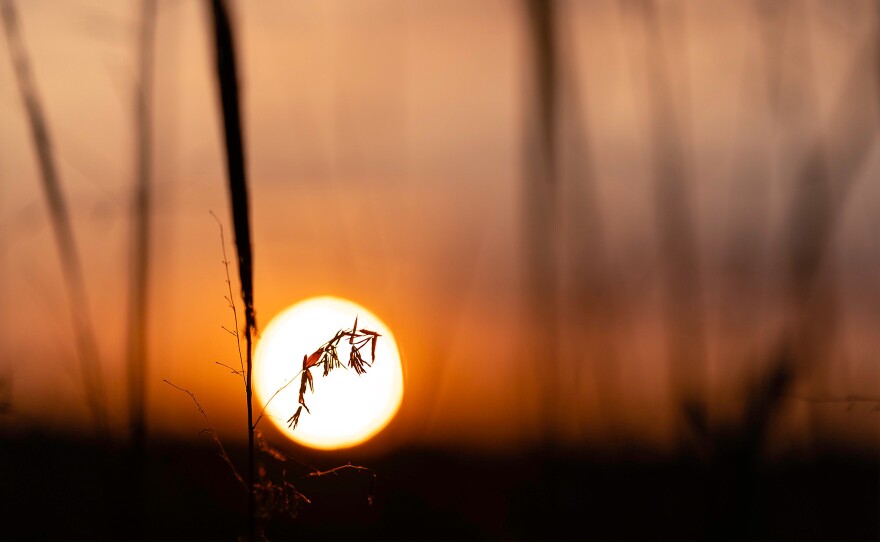While the lack of rain doesn’t bode well for most crops, wild rice stands across the region are in good shape with few impacts from summer storms.
Minnesota’s harvest season — which began Aug. 15 and runs through Sept. 30 — is underway and harvesters are collecting the native grain.
“Unusually warm days this spring got plant growth off to a fast start and generally dry weather has meant many rice waters weren’t impacted by rainstorms,” stated Ricky Lien, Minnesota Department of Natural Resources wetland habitat team supervisor, in a news release. “Overall rice stands are looking pretty good, though rice stands on some lakes are better than others.”
As people consider harvesting, they should understand the regulations helping to protect wild rice stands for future years.

Harvesters are allowed to take ripe wild rice each year during the harvesting season, but Minnesota’s green rice law makes it illegal to harvest unripe or “green” rice, even within the dates of the harvest season. Although rice beds might look like they are ready, ricers must make sure the grain is ripe and falling easily from the stalk before attempting to harvest it.
Wild rice (manoomin/psiŋ) is spiritually, culturally, nutritionally and economically significant to tribal communities. Wild rice plays a key spiritual and cultural role in Ojibwe, Dakota and other tribal traditions. Additionally, a significant portion of the wild rice in Minnesota is located within Ojibwe reservations or treaty-ceded territory.
It is unlawful for any person to take wild rice grain from any of the waters within the original boundaries at the White Earth, Leech Lake, Nett Lake, Vermilion Lake, Grand Portage, Fond du Lac and Mille Lacs reservations, except for Native Americans or residents within the reservation from which the rice is collected.
In addition, all nontribal members wishing to harvest or buy wild rice within the boundaries of the Leech Lake Reservation must have a Leech Lake Reservation permit.
While the dry weather means the rice itself is in good condition, it could lead to low lake levels making some areas inaccessible.
“People interested in harvesting wild rice should do some scouting to look for good stands of rice,” Lien stated. “Folks will also want to do some scouting to check access conditions.”
Visit the Minnesota DNR’s wild rice management webpage for a condition report along with license, regulation and safety information. Anyone looking for more information on wild rice in their area can contact their local Minnesota DNR wildlife manager or Shallow Lakes Program specialist.
Since wild rice is ripening at the same time as Minnesota’s early waterfowl hunting seasons, the DNR urged over-water waterfowl hunters to be aware of and cautious about wild ricers.
Those who plan to hunt the early teal season on the Leech Lake Reservation should be aware of hunting restrictions near posted rice beds. Early-season teal hunters may not hunt within a half-mile of posted wild rice beds open to harvest within the reservation boundaries. For more information, contact the Leech Lake Band of Ojibwe. Minnesota’s early teal season is Sept. 2-6, and early goose season is Sept. 2-17.

Harvesting tips
Harvesters usually use a canoe with a push pole or paddles for power, and collect rice using two sticks, or flails, to knock mature seeds into the canoe. While labor intensive, harvesting wild rice can be rewarding, and finding a mentor who knows what they’re doing can make the learning process easier, the DNR stated.
As part of the Outdoor Skills and Stewardship series, Minnesota DNR staff produced a webinar about how to harvest wild rice. The webinar recording can be viewed online.
To prevent the spread of invasive species, ricers should make sure their canoe and gear is clean before arriving at the rice lake. Before heading out, harvesters should plan for how the rice will be processed. Novice rice harvesters are often advised to use a processor rather than attempt to process it themselves, according to the DNR.
The Minnesota DNR sends out periodic newsletters about rice harvesting topics. People can sign up to receive the newsletters on the Minnesota DNR home page by finding the “Get email updates” box, entering an email address and selecting the “Go” button. Then in the subscription list, check the box for “wild rice harvesting.”












